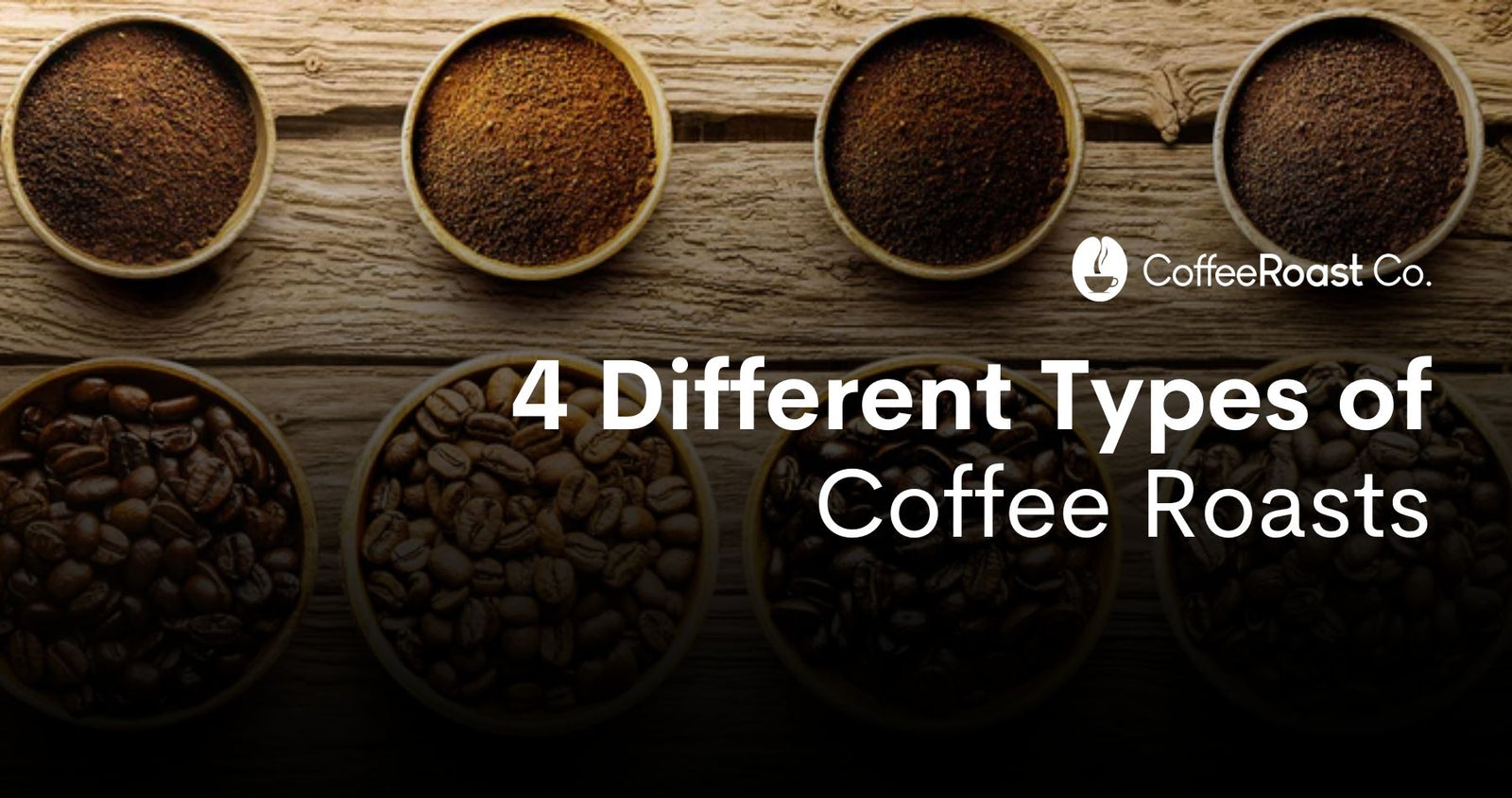You're not alone if you've ever been overwhelmed in the coffee department of a supermarket. City, French, Viennese, and Cinnamon are just a few of the hundreds of varieties available. There are almost as many types of roasting as there are coffee kinds.

The coffee bean itself is relatively unimportant, but the roasting process adds a lot of aroma and flavor to it. The amount of time spent roasting your beans will have an impact on many factors, including their body, acidity, and flavor. We've created this helpful list of coffee roast descriptions to help you learn more about the four primary kinds of coffee roasting.
Light roast, medium roast, medium-dark roast, and dark roast are the four types of coffee roasts. Each has a distinct fragrance, appearance, and flavor profile. Continue reading to learn more about the four different sorts of coffee roasts!
Four Types of Coffee Roasts:
1. Light Coffee Roasts
Light roasts are roasted for the shortest time. Lightly roasted beans generally have an internal temperature of 356°F - 401°F, shortly after the initial crack. Because they haven't been roasted at a high enough temperature, these beans don't develop oils on them.
The more time a bean is cooked, the more heat removes caffeine and acidity. This indicates that light roasts have the most caffeine (by volume) and acidity. Because of the quicker roast duration, lighter roasting does not prevent some chemical transformations from taking place inside the bean. In light roasts, the medium-dark roast is typically sweeter and smoother, whereas in dark roasts, it is more bitter and earthy. Because tastes generated by the roasting process frequently aren't apparent in light roasts, the acidity is often accompanied by a citrus or lemon flavor that some people enjoy.
2. Medium Coffee Roasts
A medium-roasted coffee is burned to temperatures of 410°F to 428°F within the bean. The first crack occurs between 360°F and 380°F, followed by the second crack at 400°F. They have a greater body than a light roast and less acidity.
The majority of American coffee consumers are used to medium roasts. These roasts are thought to have well-balanced tastes. A medium roast's acidity and body might vary, but they tend to be in the middle. House blend, Breakfast roast, and American Roast are all examples of medium roasts.
3. Medium-Dark Coffee Roasts
The internal temperature of well-roasted beans is 437°F–446°F. This is before or immediately after the second crack. Because the temperatures are high enough, this roast will also start to display the oils on the beans' surface.
A medium-dark roast coffee blend has a more robust, fuller taste, greater body, and less acidity. A medium-dark roast coffee mix includes the Vienna Roast and Full-City Roast as examples.
4. Dark Coffee Roasts
The roasting temperature for a dark roast is between 482°F and 488°F. Dark roast beans have prominent oils. In most cases, a dark roast lacks distinctive origins flavors; rather, it leaves only the effects of the roasting process on that type of coffee bean.
Because the sugars in the coffee beans have time to caramelize, dark roasts have a sweeter flavor. The longer roasting process helps it to develop a richer flavor and full body, which often leads to a buttery finish. They also have the lowest acidity of all coffee roasts. Because they are roasted the longest, dark roasts have the least amount of caffeine. The darkest roast is referred to as a French roast and has a distinct smoky taste. If coffee beans are roasted for a longer period of time than a French roast (482°F), the oils and sugars in the bean will burn. Because dark roasts are more popular in Europe, such as the Italian roast, they have European names.
What does the roasting process do?
The coffee bean is the seed within a coffee cherry. Coffee beans are green and have little fragrance before they're roasted, except for an earthy, grassy smell. The roasting procedure transforms raw coffee beans into the wonderful cup of coffee you're drinking.
Toasting transforms coffee beans brown and develops chocolatey, caramelized notes as a result of the roasting process. Oils appear on the bean's surface at higher temperatures. The beans shatter for the first time at 401°F and begin to expand. They fracture a second time around 437°F. High-grade coffee beans are never roasted above 482°F. After they reach a certain temperature, they will thin out and acquire a burnt flavor. You don't want to down a cup of charcoal!
In the coffee trade, roast names and descriptions are not standard, and roasting is a mix of art and science. It might be difficult to select the proper bag of beans because to all that variation. However, by the color of the bean and how it tastes, you should be able to determine the roast level.





Minani Hamisi
September 04, 2025
I want to take a roasting course